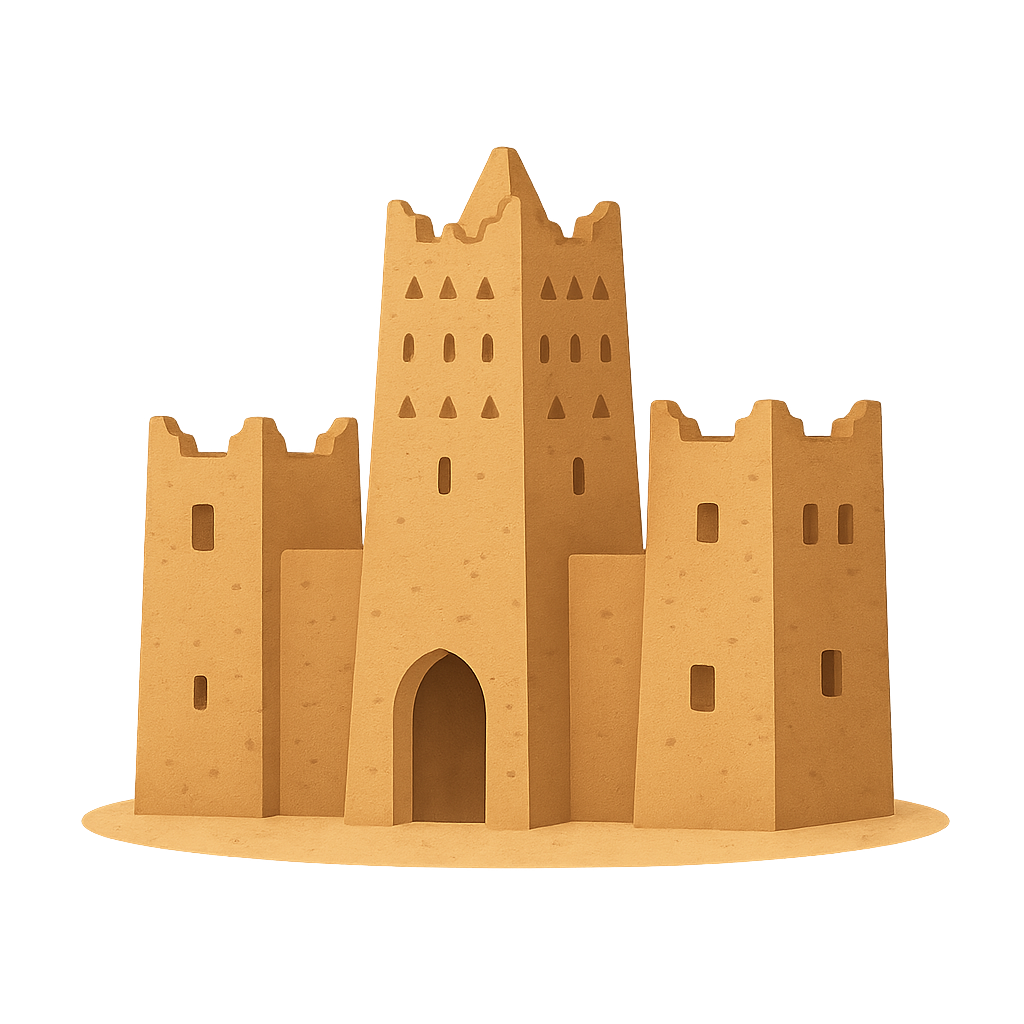The Whispering Sands
I am an ocean of shimmering gold, stretching out under a sun that burns like a brilliant jewel in a vast, blue sky. My waves are not made of water, but of endlessly shifting sand, sculpted by the patient hand of the wind. By day, a deep silence settles over me, a quiet so profound you can almost hear the Earth turning. By night, I trade the sun’s fire for the cool, silver light of a million stars, a blanket of diamonds thrown across the darkness. I am immense, touching the shores of the Atlantic Ocean in the west and the Red Sea in the east, covering parts of more than ten countries in my sandy embrace. For thousands of years, people have seen me as a great barrier, a test of strength and spirit. But I am also a bridge, a keeper of stories, and a canvas where history has been written. My dunes whisper tales to those who know how to listen, tales of green valleys, of brave explorers, and of golden cities that rose from my edges. I am a landscape of extremes, of breathtaking beauty and formidable power. I am the Sahara Desert.
But I was not always this way. If you could travel back in time, say to the year 9000 BC, you would not recognize me. Between about 11,000 and 5,000 years ago, during a period scientists call the African Humid Period, I was a different world. I was green. Imagine me not as a sea of sand, but as a land of sprawling savannas, where tall grasses swayed in a gentle, rain-filled breeze. Great rivers, wider than any you see today, carved paths through my plains, emptying into enormous lakes that shimmered under the sun. Herds of elephants and giraffes roamed freely, while hippos wallowed in my cool waters. This was my youth, my green and vibrant chapter. People lived here then, hunters and fishers who thrived in my abundance. They left behind a diary for the future, not in books, but painted and carved onto my stones in places like Tassili n'Ajjer. Their beautiful rock art shows them hunting, dancing, and living alongside animals that can no longer survive here. But the Earth is always changing. Slowly, over thousands of years, the planet's orbit shifted slightly. The life-giving monsoons moved south, and the rains came less and less often. My rivers dried up, my lakes vanished, and the sand, which had always been waiting beneath, began its patient advance. It was not a sudden catastrophe, but a slow, quiet transformation into the desert I am today.
My transformation into a desert did not end my story; it simply began a new one. I became a great highway, a challenging but essential path connecting the worlds of North Africa with the kingdoms to the south. Beginning around the 8th century and lasting through the 16th century, I was the heart of the great Trans-Saharan Trade. The journey was not for the faint of heart. But humans are clever, and they found a partner perfectly suited to my terrain: the dromedary camel. These magnificent creatures became the 'ships of the desert,' capable of carrying heavy loads for weeks with little water. Great caravans, sometimes with thousands of camels, moved in long, snaking lines across my dunes. They were often led by the Tuareg people, my most trusted friends. Known as the 'blue people' for their indigo-dyed veils, they were masters of navigation. They read the sun by day and the stars by night, knowing my secrets, my hidden wells, and my safest paths. The caravans carried precious cargo. From the north, they brought salt, a mineral so valuable in the hot south it was sometimes traded for its weight in gold. And from the south, they brought that gold, along with ivory and other treasures, to the Mediterranean world. This incredible exchange of goods also became an exchange of ideas, cultures, and knowledge. On my southern edge, this trade gave rise to legendary cities like Timbuktu, which in the 14th and 15th centuries became a world-renowned center of learning, with vast libraries and a famous university.
Today, many people still think of me as empty, a void on the map. But I am full of life and secrets, both old and new. You just have to look closely. Clever animals have adapted to my harshness, like the fennec fox, whose enormous ears help it to stay cool and listen for prey beneath the sand. Resilient plants find ways to survive, their roots digging deep to find water. My story continues to unfold. Scientists now travel across me, not for gold or salt, but for knowledge. They unearth the fossilized bones of dinosaurs and giant prehistoric crocodiles, proving that even before I was green, I was home to incredible creatures. They study my climate patterns to better understand the future of our planet. And as the world looks for cleaner ways to power itself, people see my endless sunshine not as a challenge, but as a source of immense solar energy. I am not an ending, but a testament to change and endurance. I hold the memory of ancient lakes and the footsteps of golden caravans. I am a place that reminds you that even in the harshest conditions, life finds a way, and the human spirit of discovery never rests.
Reading Comprehension Questions
Click to see answer
